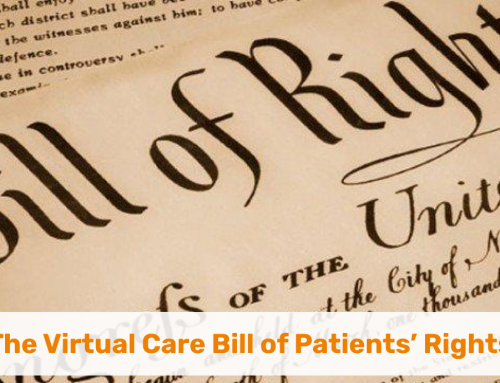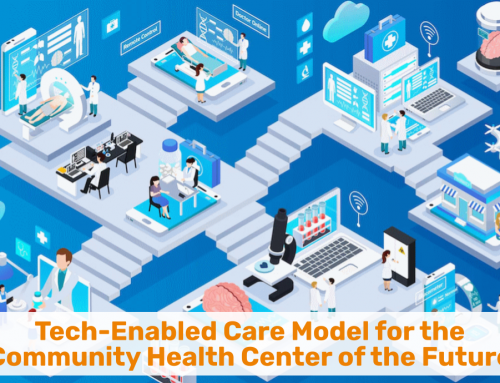In last week’s article I laid out a simple framework of five key metrics that telehealth leaders need to pay attention to when it comes to measuring telehealth success. They are:
- physician and patient satisfaction
- technical performance
- visit volume and reimbursement
But how do you actually collect those metrics and what data should you be expecting or be satisfied with? That is the focus of this week’s Telehealth Tuesday article.
Collecting Satisfaction Data
In the set of success metrics, the first two are about the physicians’ and the patients’ satisfaction with the telehealth service overall. The easiest way to get at this data is through a quick survey.
In order to ensure high participation, though, the collection of the data must be tailored to the preference of the users you are collecting the data from.
There are three pragmatic approaches that I have used to obtain satisfaction data: through interviews, by asking to complete a written survey, or by asking to complete an electronic survey.
From a data analysis and reporting perspective, the electronic collection is obviously the preferred one, as the collected data does not have to be transcribed for analysis.
But getting physicians or patients to click on a link and fill out a form can at times be tricky, depending on a variety of factors. In some organizational cultures, clinicians don’t want to be bothered with much “electronic stuff” and may prefer a simple written survey they can complete in 30 seconds or less. In other organizations (or when it is difficult to get the completed surveys back), clinicians may be willing to complete online surveys, if they are easy to find and easy to use.
For patients, I have found mixed participation with electronic surveys, although the acceptance of patients to use electronic tools is growing, given the strong convenience afforded by telehealth. A good starting point to collect patient satisfaction data are also post-visit interviews, ideally incorporated into the post-visit process.
With regard to the actual satisfaction survey questions, I typically ask physicians and patients 4-6 questions, depending on the specialty and the anticipated areas of optimization. The basic questions that get at the experience with the technology are the patients’ and clinicians’ ability to clearly see and hear each other and the ease of connecting.
The two key satisfaction questions, though, are for patients the likelihood to “recommend telehealth with this clinician to friends and family” (which allows the calculation of a net promoter score) and for clinicians the question whether this visit was “as good as an in-person visit”. These two metrics are the key indicators for overall satisfaction with telehealth.
Especially the question for clinicians has opened up numerous conversations about improving the telehealth service in a way that improves clinical outcomes.
Measuring Technical Performance
The third key metric is the performance of the telehealth technology. Here “simpler is better” unless you have reasons to dig deeper. The basic aspects of technical performance are clarity of audio and video, overall connectivity, and interrupted or dropped connections.
Merely the satisfaction with the audio and video (as described above) alone can provide good insights. But also a set of technical statistics (such as calls interrupted, or calls abandoned) that could hint at potential problems should be looked at if they are easy to obtain.
As always, metrics should be collected to drive decision making, so if it is unclear how an organization would act on certain data, it should not be collected.
Financial Performance Metrics
The final two key metrics are about the visits volumes and reimbursement information.
For visit volume, the absolute number of visits (which can be obtained from your scheduling or your billing system) is not as much of interest as it is in the context of the in-person visits and compared to the total number of visits in the same period in previous years. It is also valuable to put the number of visits into context of your local and regional Covid infections and take a careful look at trends.
For the reimbursement data, which could fill a whole series of articles, it is important to track reimbursement by modality, i.e., in-person, video-based telemedicine, telephonic telemedicine, etc.
This is especially important regarding the audio-only, telephonic telemedicine. There’s a clear expectation that reimbursement for telephonic care, which is already lower, will be going away. It is thus important to collect that data and decide jointly with clinicians on how to “wean” clinicians off of the telephonic-only care.



Benchmarking against the Best
Data collection in isolation is not very helpful, though over time leaders can measure the performance against their own historical benchmark. But to truly assess the performance of telehealth, it is better to compare the results with those of other organizations.
With regard to those five key metrics, here are results that we see our best clients achieve:
- Physician Satisfaction: 4.3 or better on a 5-point Likert scale
- Patient Net Promoter Score: 70 or better (but even 50+ is great)
- Technical Performance: 99% uptime, no systemic/repeated failures
- Visit volume: 95% or better than pre-covid volumes
- Reimbursement: no more than 10% reduction in revenue
How are your telehealth services measuring up against those benchmarks?
Want to talk more about metrics and how to collect them? Then contact me through email, text, or zoom.








To receive articles like these in your Inbox every week, you can subscribe to Christian’s Telehealth Tuesday Newsletter.
Christian Milaster and his team optimize Telehealth Services for health systems and physician practices. Christian is the Founder and President of Ingenium Digital Health Advisors where he and his expert consortium partner with healthcare leaders to enable the delivery of extraordinary care.
Contact Christian by phone or text at 657-464-3648, via email, or video chat.







Leave A Comment